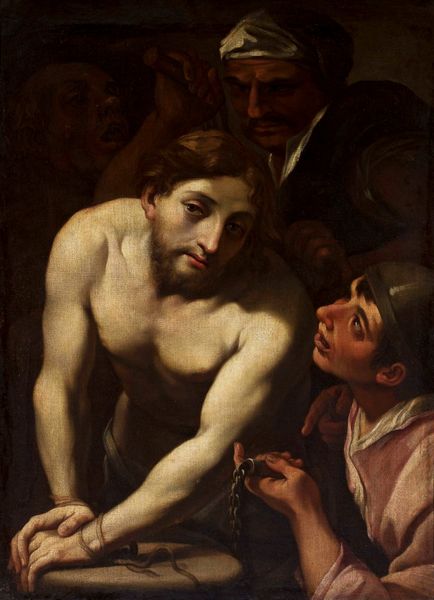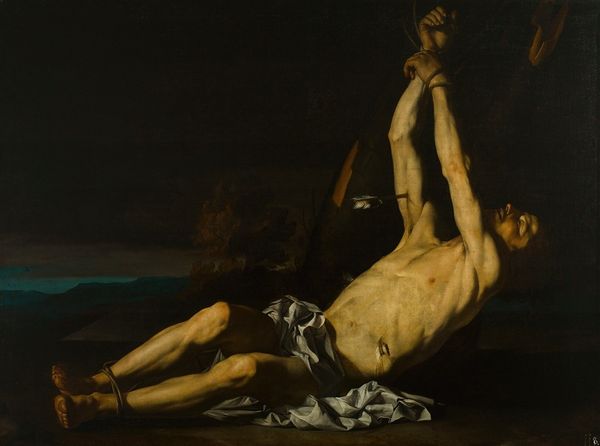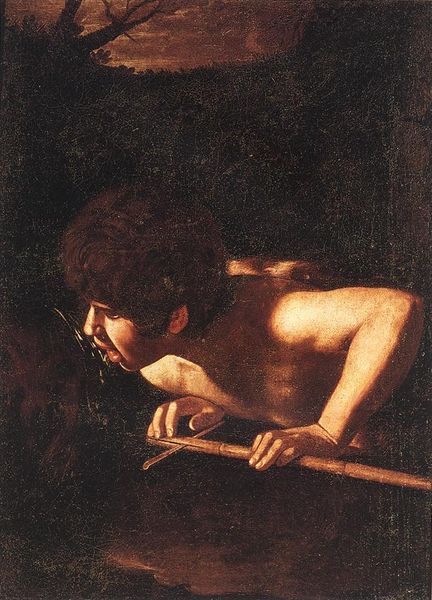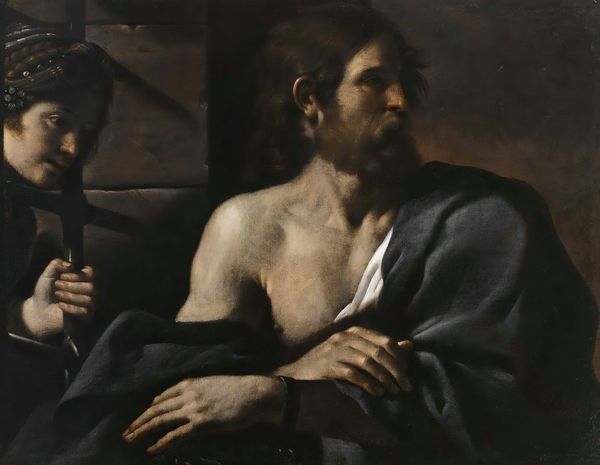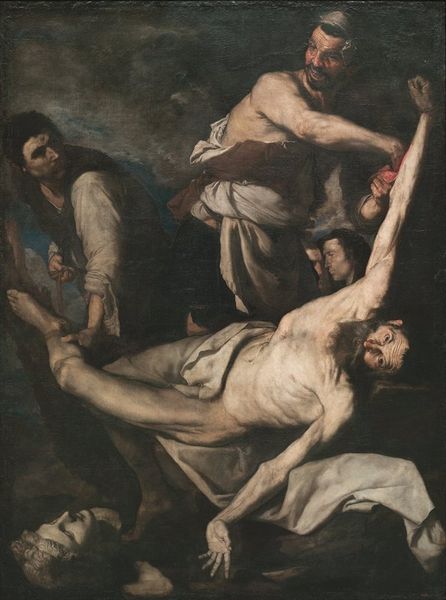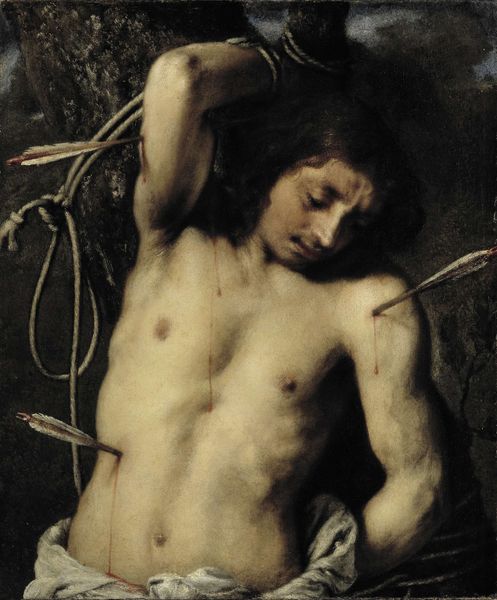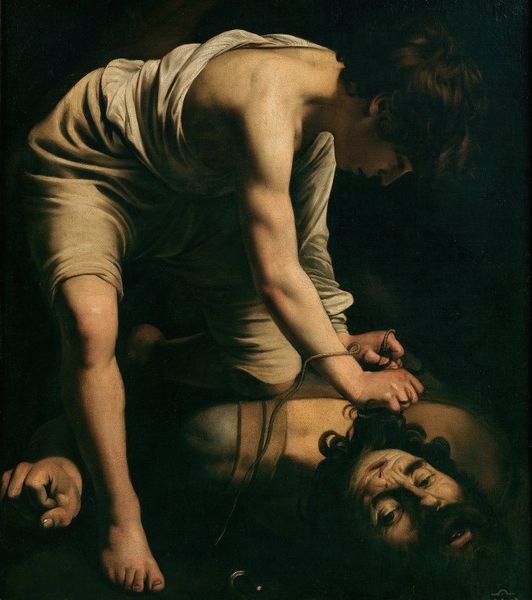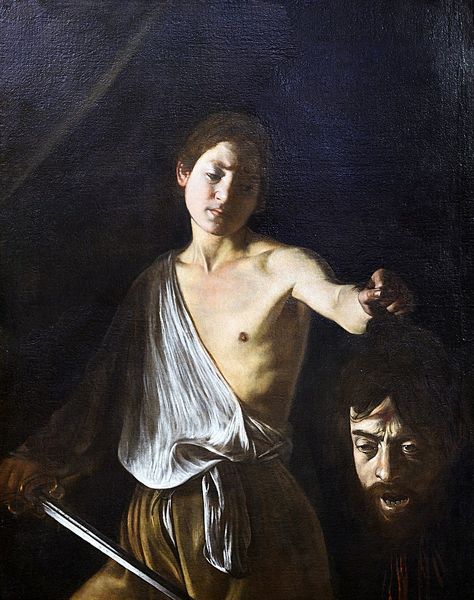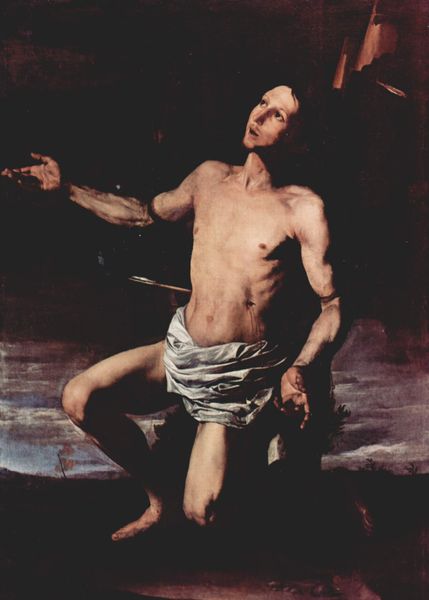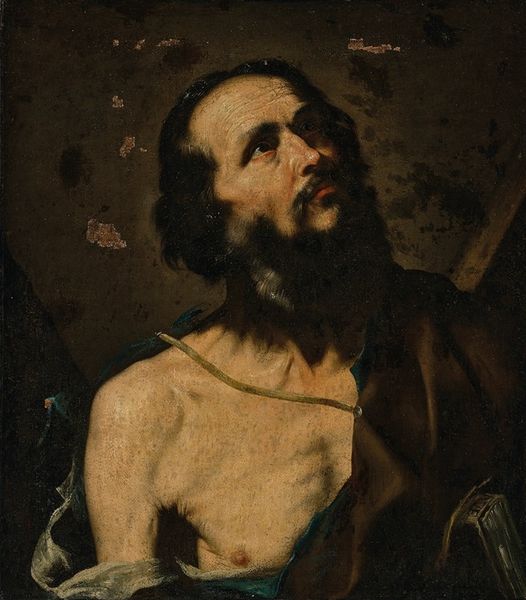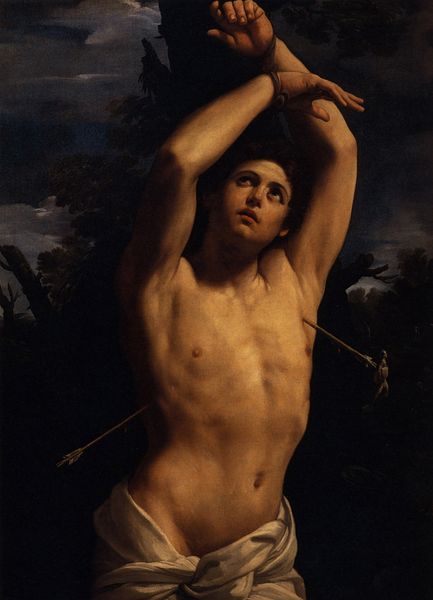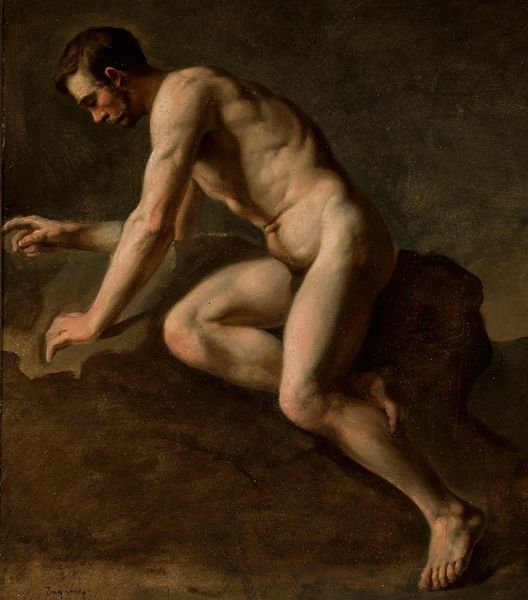
painting, oil-paint
#
allegory
#
baroque
#
painting
#
oil-paint
#
figuration
#
chiaroscuro
#
history-painting
Copyright: Public Domain: Artvee
Editor: This is Jusepe de Ribera's "David and Goliath," painted around 1620 using oil. The stark contrast between light and shadow really makes it dramatic. It's like a snapshot capturing a potent moment. What catches your eye in this work? Curator: Immediately, the dynamism of the composition stands out. Ribera's use of tenebrism—that pronounced contrast you noted—functions not merely decoratively but structurally. Notice how the diagonal line created by David's arm and the sword not only divides the space, but also directs our gaze. Editor: The spotlight on David definitely emphasizes his youth against Goliath's… well, Goliath-ness. Curator: Precisely. The artist is consciously playing with the visual weight of these forms, consider how light molds David's idealized body in sharp relief while simultaneously obscuring other narrative elements into an impenetrable darkness. It isn't about clear storytelling, it's about creating a striking visual binary. Note also how Ribera deploys contrasting surface textures—the smooth flesh of David versus the grotesque reality of Goliath. Why these variations in finish? Editor: So it is less about illustrating the biblical tale, and more about pushing the limits of what oil paint can do? Curator: Indeed. Observe how the stark arrangement allows the figures and tones to carry substantial visual weight. And while history-painting implies narrative, that becomes secondary to the sensory encounter, don't you think? Editor: Definitely something to ponder, that technical virtuosity overshadows straightforward storytelling. Curator: And something Ribera executed brilliantly.
Comments
No comments
Be the first to comment and join the conversation on the ultimate creative platform.
